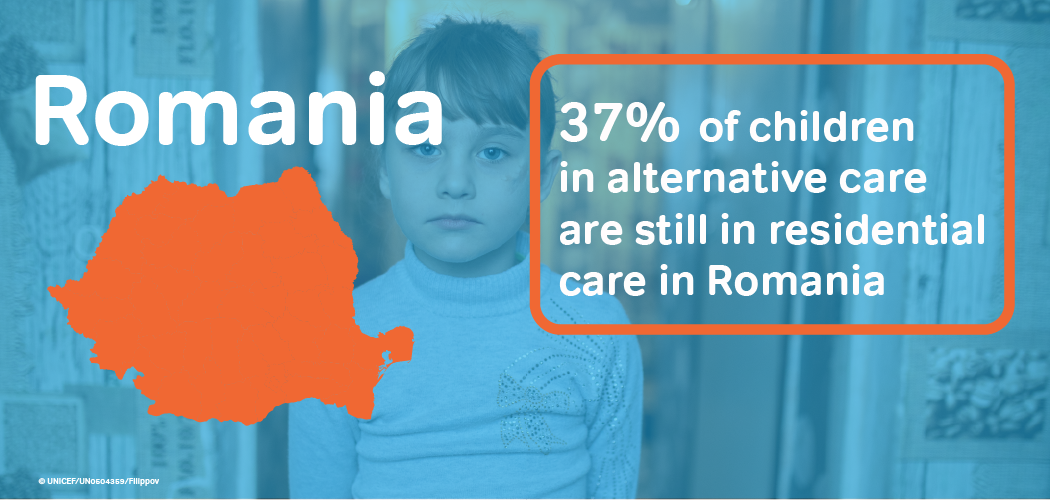How could the DataCare recommendations be implemented in Romania?
DataCare National Correspondent, Daniela Tarnovschi, explains how statistical data can help inform decisions and design effective public policies
Over the past year, Eurochild, in partnership with UNICEF ECARO, has worked closely with national experts to improve the availability and scope of national and EU-level data for children, with a focus on children in alternative care. In Romania, we have worked closely with our National Correspondent, Daniela Tarnovschi, to inform the drafting of Romania’s Child Guarantee National Action Plan (NAP).
Daniela is a sociologist, a researcher, an advocate and an NGO-worker, but she also has experience advising state authorities, namely the National Authority for the Protection of Children's Rights and Adoption (NAPCRA).
Daniela has had an interest in reforming Romania’s child protection system since the adoption of her daughter. Additionally, as the deputy director of Life and Light Foundation, an NGO involved in child protection since 1996, she has also been directly involved in Romania’s deinstitutionalisation process through their programmes.
Together with Dr. Gabriela Dima, she contributed to the Eurochild DataCare project and continued working with Eurochild to implement the recommendations of the DataCare project in Romania.
The research and reception of the DataCare study to map national data collection systems on children in alternative care demonstrated that there was an increased appetite for data-driven policies. Eurochild worked with Daniela to present the final reports from the study to the NAPCRA and emphasise that the recommended baseline indicators on children in alternative care be included into Romania’s NAP. Examples of two other NAPs from Greece and Croatia were also shared.
The war in Ukraine halted the NAPCRA’s efforts on finalising the country’s NAP. In fact, their resources were redirected towards helping Ukrainian children; understanding the Ukrainian child protection system, given its differences with the Romanian one; and dealing with so diverse and difficult situations concerning vulnerable children, fleeing their home country.
In August 2022, the Eurochild DataCare team for Romania met with NAPCRA representatives to explain the importance of the baseline indicators on children in alternative care, and the benefits of collecting this data at European level.
Following the publication of the Romanian NAP, the NAPCRA organised a public consultation. During the meeting, different NGOs shared their observations and suggestions, and Daniela had the opportunity to present Eurochild’s perspective.
When it comes to children in alternative care, the Romanian Child Guarantee National Action Plan highlights deinstitutionalisation of children, with a focus on children with disabilities, who continue to be disproportionately represented in Romania’s child protection system. The plan also specifies measures to prevent family separation.
The Romanian NAP also includes indicators for children in alternative care, which are directly informed by recommendations from the DataCare project, namely:
- number of children in residential care, disaggregated by age, gender, and disability;
- number of children under 7 in residential care, disaggregated by age, gender, and disability;
- percentage of children in family-type services in comparison to the total number of children in the special protection system, disaggregated by age, gender, and disability.
The NAPCRA will continue to publish the data required to compute these proposed indicators four times a year.
The Romanian Child Guarantee National Action Plan also aims at solving the many problems faced by children in Romania, as the country leads when it comes to the percentage of children at risk of poverty or social exclusion (41.4% in 2021) in EU countries.
By including indicators on children in alternative care, Romania is ensuring that the situation of these children will be a key consideration in the implementation of public policies and programmes throughout the lifespan of the Child Guarantee.





